Sound Transit is entering the final design process for the Tacoma Link Expansion project. The design process is meant to be a thorough undertaking to evaluate community needs and desires while working out engineering and permitting work. Public comment on station design, artwork, construction mitigation, traffic impacts, and station naming is needed as the final design process moves forward.
Yesterday, the agency released project designs for initial public feedback. Those designs are a mix of high level concepts like what stations might look like and the amenities to support them, as well as detailed diagrams of station layouts and right-of-way improvements. This process comes on the heels of recent project approval by the Sound Transit Board of Directors to grant a 2.4-mile extension of Tacoma Link.
Design Concepts
The streetcar extension will look a lot like the Tacoma Link and Seattle Streetcar systems of today. Trains will generally operate in shared right-of-way with other vehicle traffic. The entire length will be double-track, meaning that trains could operate side-by-side when placed toward the median or separated by turn lanes when placed in general lanes. A majority of the stations will be center platform, but a few will be side platforms.
The first of the following four renderings shows the kind of overhead contact system that Sound Transit plans to use for wire. In an earlier phase of the project, Sound Transit had envisioned a two-wire system. But the agency decided to go with a single-wire contact system, which is less visually intrusive. The latter three renderings offer a window into what different portions of the extension could look like when opened.
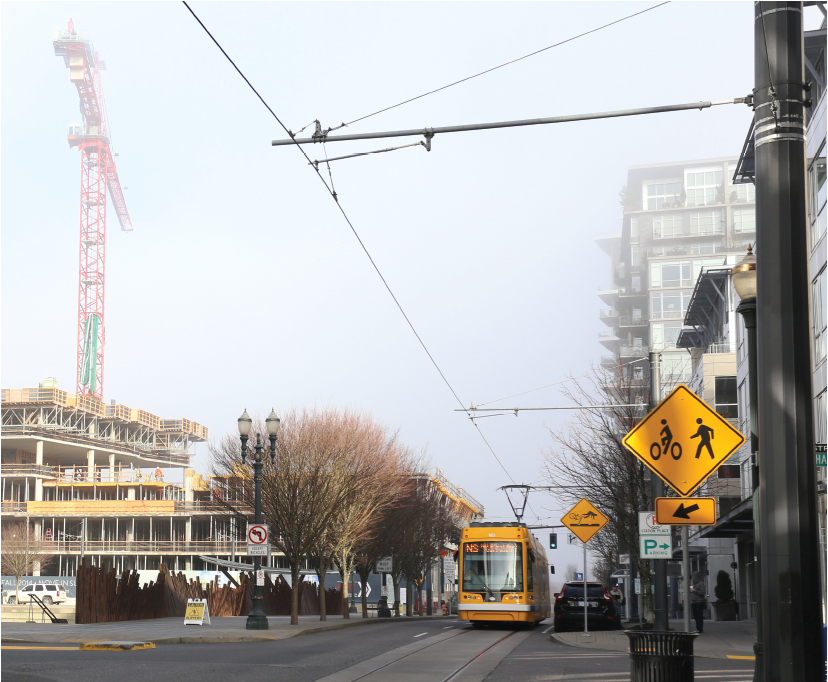
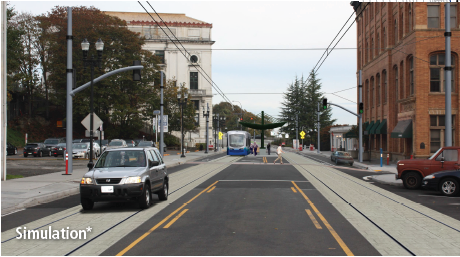

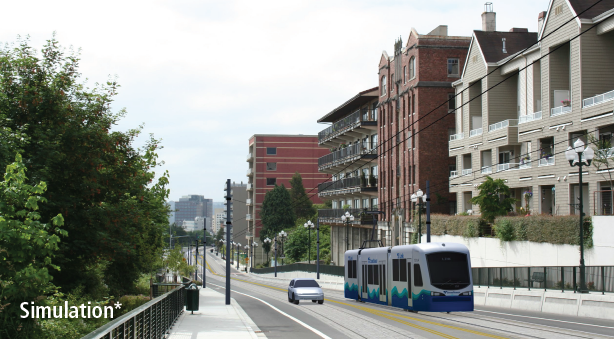
Traction Power Substations
Since streetcars will be propelled by an overhead contact system, the new extension will need to be powered by additional traction power substations (TPSS). So far, Sound Transit has identified four potential TPSS locations to power the various segments. The agency is targeting locations that will be within existing right-of-way or on city-owned property. This will presumably reduce costs for acquisition and permitting. Of course, the structures themselves tend to be quite bulky and noticeable from the street. Recognizing this, Sound Transit will design them to incorporate public art, landscaping, and fencing — much like the TPSS located elsewhere along streetcar lines in Seattle and Tacoma.
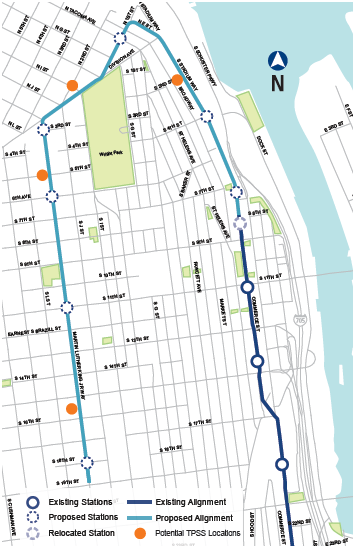
Station Layouts
As part of the 30% design process, Sound Transit has released preliminary layouts of each new station and the associated streetscape changes. Of the seven stations to be constructed, four are planned to be built with center platforms. The remaining three stations will be built with side platforms. With the addition of these stations, the streetscapes will receive substantial changes, including: removal and adjustment of parking; new signals, crosswalks, curb extensions, and ramps; and new curb and turning restrictions.
The location of side platform stations presents a design issue for Sound Transit to address. That’s because almost universally, the platforms are placed before a signalized intersection. Typically, this means that streetcars could be forced to dwell at platforms if caught behind a red signal before crossing the intersection. Sound Transit plans to mitigate this problem with transit service priority by revising signal timing. Signals will be adjusted allow longer green lights for approaching light rail vehicles.
Theater District Station is the first of the center platform stations. That station will be relocated one block north from its current home on Commerce Street. The new station will be situated at mid-block in front of Old City Hall. A new crosswalk would be provided across the street to link the center platform to the adjacent sidewalks. And, a restricted median will be extended north toward the I-705 ramps to prevent conflicts with turning traffic.
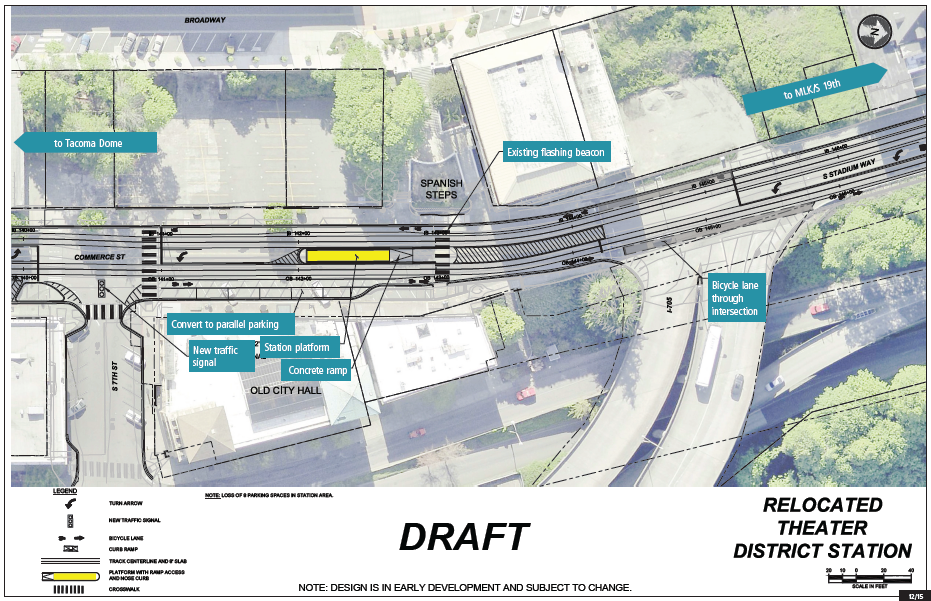
Stadium Way & S 4th Street Station would be the second center platform station. The platform itself would be located toward the intersection with an at-grade crosswalk linking the station to either side of Stadium Way. On the north end of the station crossover tracks would enable trains to switch directions.
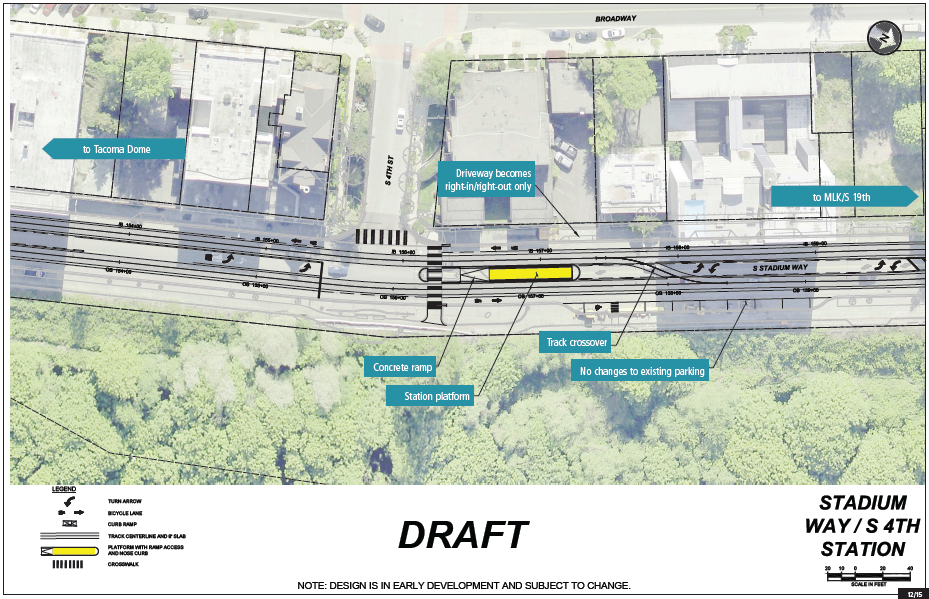
Stadium District Station would be the first side platform station. The southern platform would result in a new crosswalk added across N 1st Street. In keeping with other stations, Sound Transit has chosen to place the northbound platform just south of the signalized intersection.
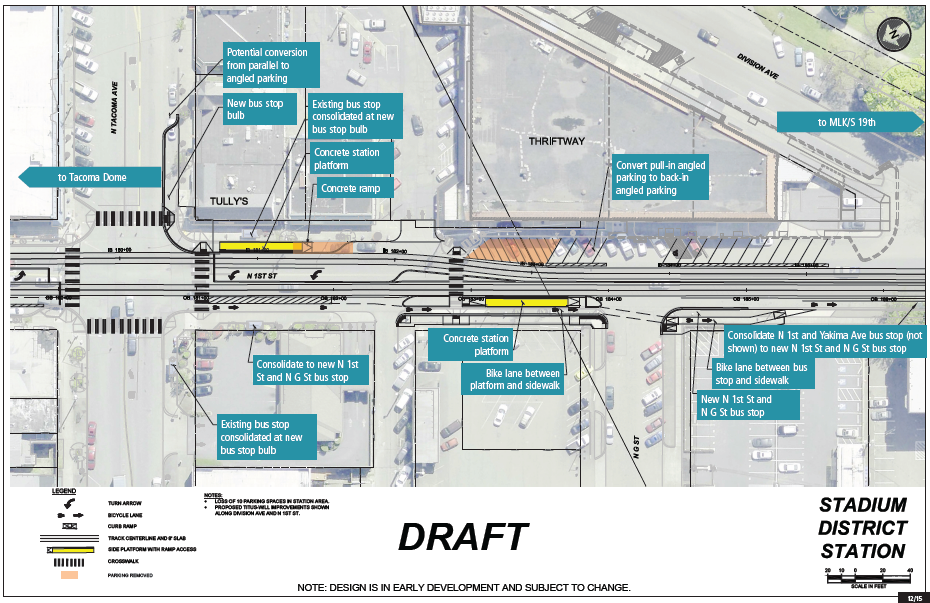
MLK Way & Division Avenue Station is the third center platform station. Again, the platform will be placed at the intersection with a crosswalk providing access to the platform and each side of the street.
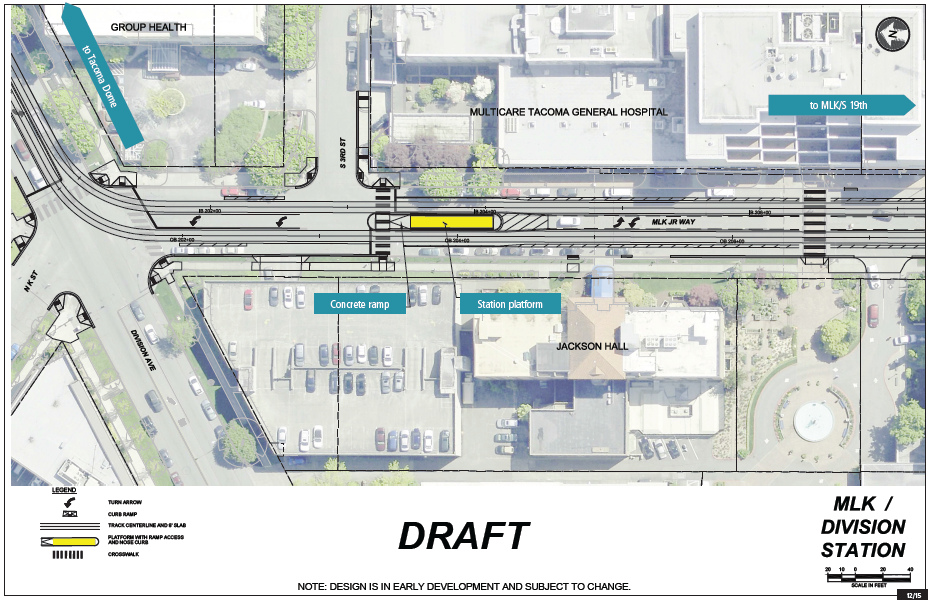
MLK Way & S 6th Street Station and MLK Way & S 11th Street Station are essentially mirror stations. Both are side platform stations with platforms on opposing sides of an intersection.
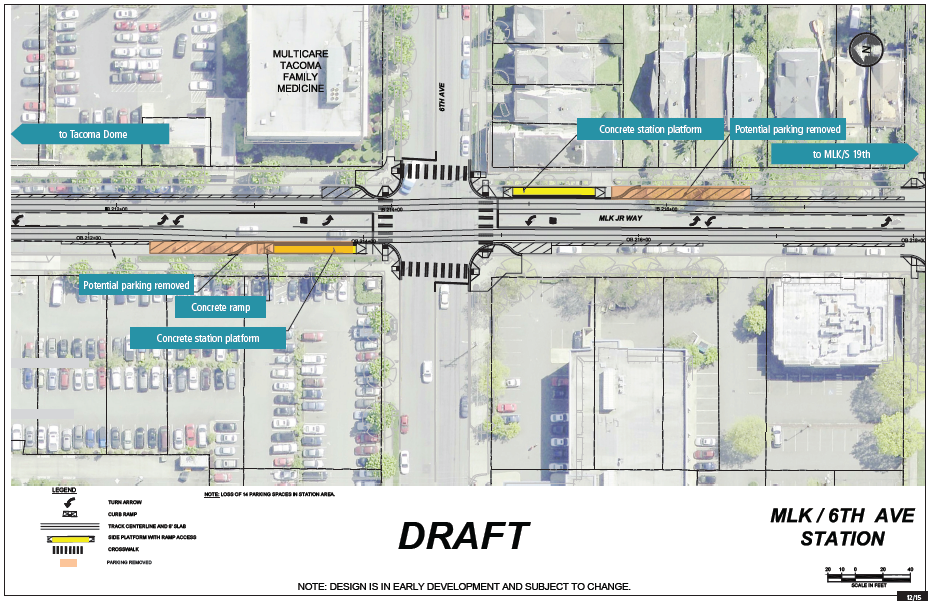
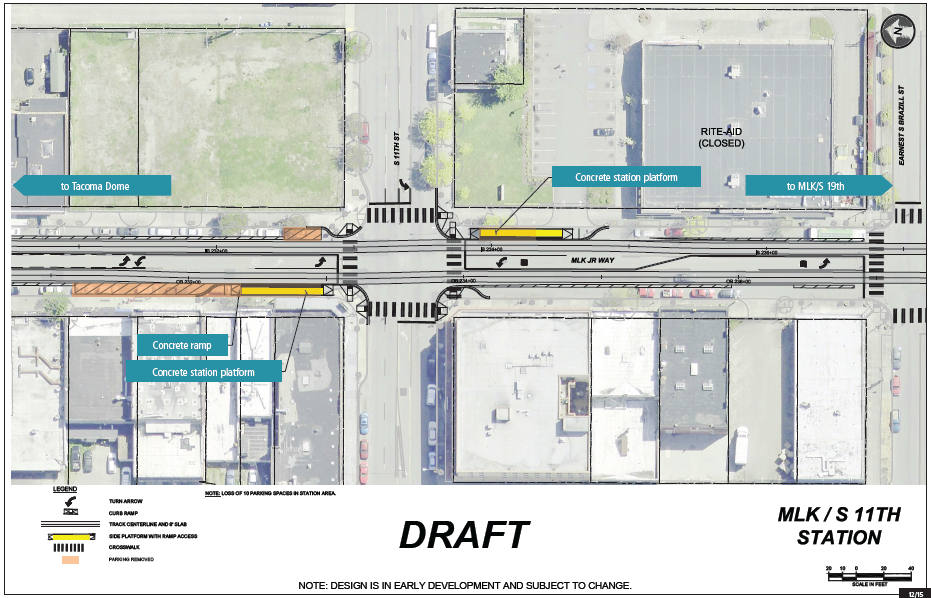
MLK Way & S 19th Street Station is the final station on the extension line. It’s a center platform station which extends to the intersection. Like other center platform stations, it has an at-grade crosswalk that provides access to the platform and adjacent sidewalks. Just beyond the platform, the double-track condenses down to a single-track for trains to turn around.
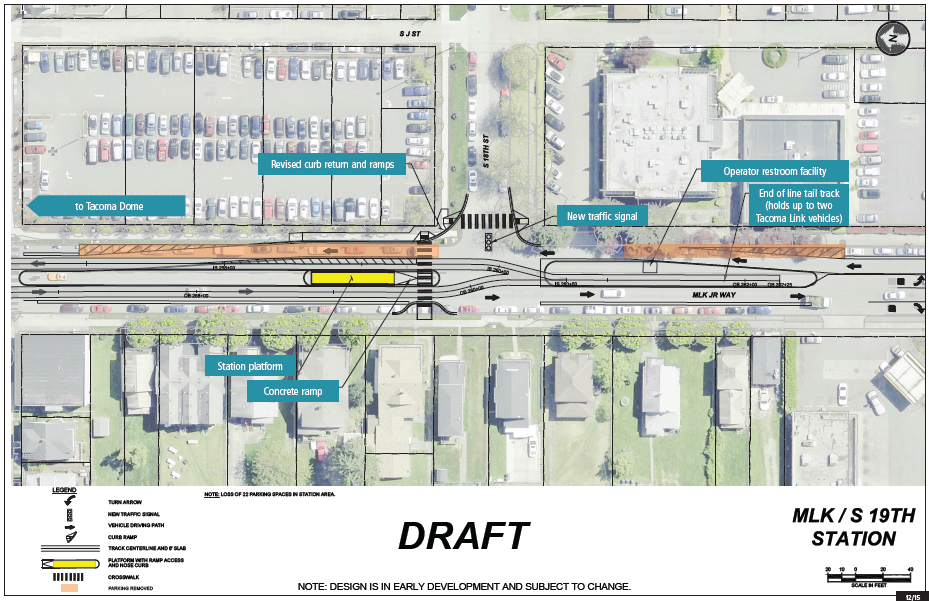
Sound Transit will hold an open house on the project tonight (Wednesday, December 2nd) from 4:30pm to 7pm at The Evergreen State College – Tacoma. Public comments on the overall project design are also welcome online.
Since the time of publication, this article has been updated to reflect additional information on transit service priority.
Stephen is a professional urban planner in Puget Sound with a passion for sustainable, livable, and diverse cities. He is especially interested in how policies, regulations, and programs can promote positive outcomes for communities. With stints in great cities like Bellingham and Cork, Stephen currently lives in Seattle. He primarily covers land use and transportation issues and has been with The Urbanist since 2014.


